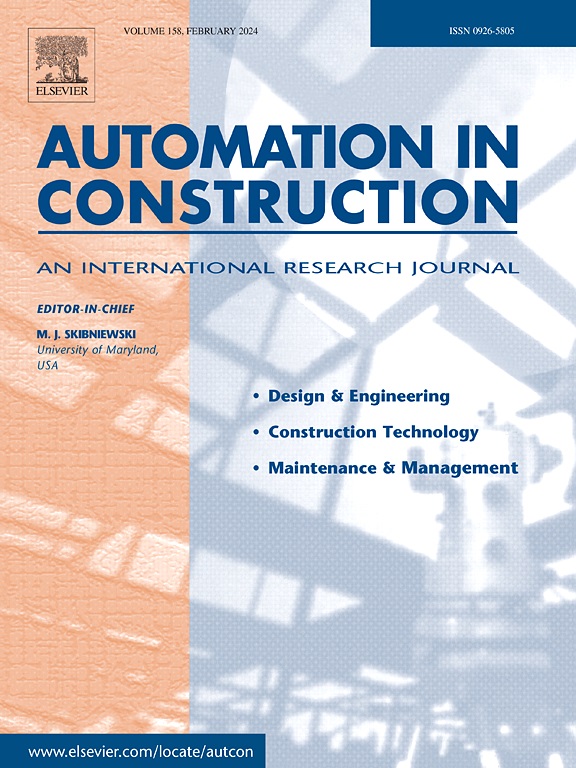学习不同点云补全的语义关键点
IF 9.6
1区 工程技术
Q1 CONSTRUCTION & BUILDING TECHNOLOGY
引用次数: 0
摘要
从现实场景中收集的原始点云是稀疏的、不完整的和嘈杂的,这对它们集成到建筑自动化工作流中提出了重大挑战。因此,完成可信且细粒度的点云是下游应用程序的关键先决条件。目前的方法主要集中在学习补丁级特征和建模它们之间的关系,以推断完整的物体形状。然而,真实场景和干净的合成数据集之间的巨大差异限制了它们对局部结构的表示能力,特别是在面对噪声和不规则缺失模式时。本文提出了一种语义关键点引导补全网络(SKPNet),以语义引导的方式增强点云补全在不同施工场景下的泛化能力。关键是建立对象几何结构与其全局语义特征之间的联系,这对点级中断具有更强的鲁棒性。据此,开发了语义关键点生成模块,根据输入点编码的全局语义向量学习具有代表性的关键点。然后将这些关键点作为控制点,搜索具有丰富局部模式信息的邻近点级特征,同时滤除过程中的噪声。通过逐步融合多尺度点级特征,逐步对关键点进行细化和上采样,最终完成细粒度补全。在合成和真实数据集上进行的综合实验表明,SKPNet在完成高质量形状方面具有竞争力和鲁棒性。本文章由计算机程序翻译,如有差异,请以英文原文为准。
Learning semantic keypoints for diverse point cloud completion
Raw point clouds collected from real-world scenes are sparse, incomplete and noisy, posing significant challenges for their integration into automation workflows in construction. Thus, completing plausible and fine-grained point clouds is a critical prerequisite for downstream applications. Current methods primarily focus on learning patch-level features and modeling their relationships for inferring complete object shapes. However, the significant disparity between real-world scenarios and clean synthetic datasets limits their representation ability of local structures, especially when facing noises and irregular missing patterns. This paper proposes a semantic keypoint guided completion network (SKPNet) to enhance the generalization ability of point cloud completion in diverse construction scenarios in a semantic-guided manner. The key insight is to build a connection between the object geometric structure and its global semantic feature, which is more robust to point-level disruptions. Accordingly, a semantic keypoint generation module is developed to learn representative keypoints based on the global semantic vector encoded from the input points. These keypoints then serve as the control points for searching the neighboring point-level features with rich local pattern information, simultaneously filtering out the noises during the process. By progressively incorporating multi-scale point-level features, this paper gradually refines and upsamples the keypoints to the final fine-grained completion. Comprehensive experiments conducted on both synthetic and real-world datasets demonstrate the competitive and robust performance of SKPNet in completing high-quality shapes.
求助全文
通过发布文献求助,成功后即可免费获取论文全文。
去求助
来源期刊

Automation in Construction
工程技术-工程:土木
CiteScore
19.20
自引率
16.50%
发文量
563
审稿时长
8.5 months
期刊介绍:
Automation in Construction is an international journal that focuses on publishing original research papers related to the use of Information Technologies in various aspects of the construction industry. The journal covers topics such as design, engineering, construction technologies, and the maintenance and management of constructed facilities.
The scope of Automation in Construction is extensive and covers all stages of the construction life cycle. This includes initial planning and design, construction of the facility, operation and maintenance, as well as the eventual dismantling and recycling of buildings and engineering structures.
 求助内容:
求助内容: 应助结果提醒方式:
应助结果提醒方式:


